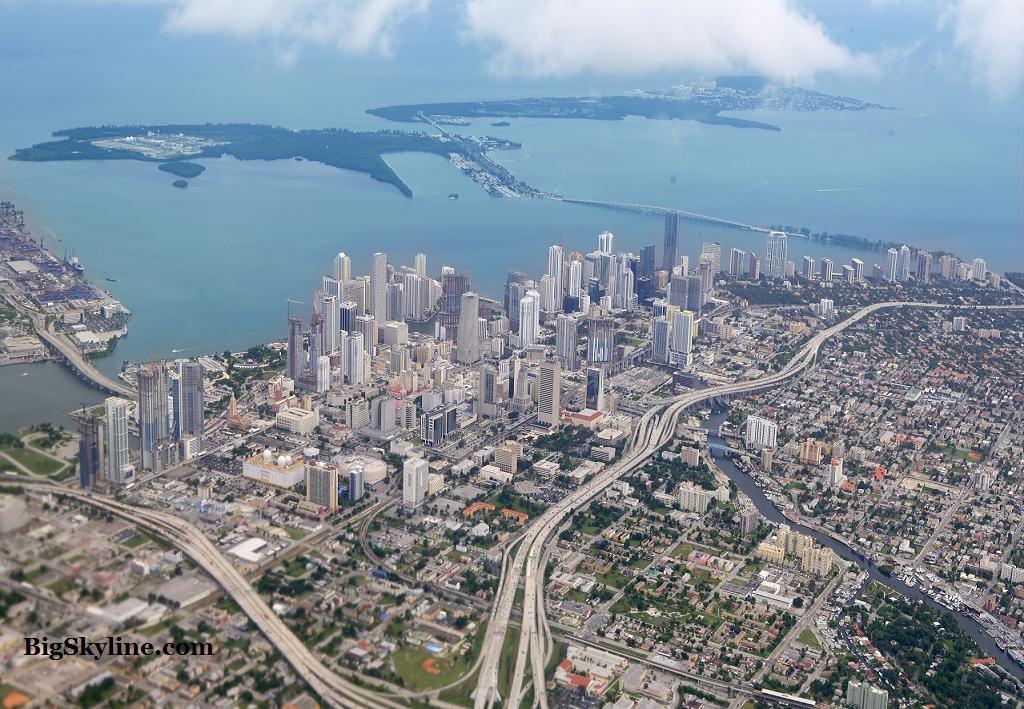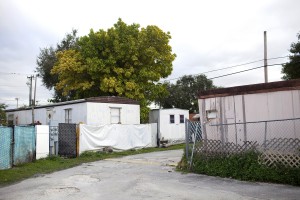
Miami: Skyscrapers rise, city sinks
Recent studies carried out by big name think tanks outside Florida have found that, in a nation with breathtaking economic inequality, Miami has one of the biggest chasms between rich and poor of any big city in the country.
Now, a just-published series in the Miami Herald on the gyrations of the local real estate market has shown that the financial crisis and its aftermath have exacerbated the problem. For while the plush condos and very expensive homes of the rich are now selling near or above their peak pre-crisis values, the average homeowner has recouped little or none of the equity lost as a consequence of the real estate collapse.

One of conservatives’ favorite talking points when it comes to economic growth and income distribution is that a rising tide lifts all ships. Over recent decades, that assertion has been shown beyond doubt to be a canard when it comes to income. Almost all the gains of the modest economic growth in the last twenty years has gone to the rich, the very rich, and the ultra-rich. The middle class meanwhile has struggled to get by on stagnant of decreasing income and the poor have fared that much worse.
What is happening now in the Miami housing market suggests the same principle applies to real estate. The current so-called real estate boom in South Florida has lifted the yachts but most of the lesser vessels are still under water or bailing just to keep from sinking.
The evidence comes from a study of housing in South Florida over eleven years, which cover the pre-boom era, the boom, the crash, and the extremely unequal recovery currently under way. The Florida Center for Investigative Reporting teamed up with the Herald to conduct the research, which includes Miami-Dade and Broward Counties. Zip codes were used as the unit of analysis in the research.
The main finding, according to the Herald, is that “while affluent enclaves like South Beach, Brickell Avenue, Coral Gables and Pinecrest have made big strides since the historic crash, the rebound in home prices has bypassed the inner city, and it has made only modest marks on the southern and western reaches of Miami-Dade.”
That’s an important conclusion. But if one takes more of a sociological than a geographical perspective, as I do, the key finding is the following:
“After the housing bubble burst, the value of the highest-priced homes in Miami-Dade and Broward counties dropped but never fell below the highest prices of 2003. The lowest-priced homes fell well below what they cost in 2003 and remained below that 2003 benchmark in 2013.”
This scramble in property values is yet another way in which the specter of inequality is rearing its ugly head, and with a special vengeance in our own patch. While the increasing gap in income nationally between the top one percent and the other ninety-nine percent has with good reason been the focus of much attention, the Miami real estate experience both points to and exacerbates another even more dramatic dimension of inequality: wealth.
Unlike income, data on wealth is not regularly gathered and distributed by the government – one wonders why – but what research there is shows that wealth is significantly more unevenly distributed than income. Since for the vast majority of Americans the equity in their homes is by far their largest source of wealth, the failure of middle class home values to rebound while upscale real estate values boom means a higher level of inequality in wealth.
The devaluation of the average home, juxtaposed with the boom in ultra-mansions and very pricey penthouses, is another blow to the idea of the United States as a middle class society. This idea, concocted during the post-World War boom from a mixture of reality and myth, is a keystone of the American mindset.
But, since the 1970s, the middle class has suffered, shrunken, and become embattled as a result of changes in the economy, especially the labor market. These changes include the upward redistribution of income, higher unemployment and underemployment, and the growth in returns to capital at the expense of returns to labor.
Now, in the aftermath of the housing bust, the vanishing middle class is suffering from a redistribution of wealth upwards as a result of changes in the real estate market. It is a double whammy that relegates the idea of a middle class society almost wholly to the realm of myth.
The rapid transformation in the skyline and social stratification of our own city now taking place at warp speed reflects a number of truly awful trends. The globalization of inequality, of corruption, and of speculation, for instance, drives astronomical prices in a condo market in which “cash is king.” But what is the source of the cash? No one really wants to know. The boom is in part a money-laundering operation on a massive scale and in part a reflection of the fear, paranoia, and bad conscience of the very rich in countries with great social injustice, generalized poverty, and widespread crime.
It’s ironic that all these forces have come together in Miami. Much of the city was built on water miraculously turned to land through huge drainage and fill projects. Even as new ones are being proposed – a soccer stadium to be built where there is now water – the sea threatens to reclaim the city as the planet becomes hotter because of the burning of fossil fuels needed, among other things, to build skyscrapers.
Which raises the question: What will sink Miami first, the rising sea or the rising tide of injustice?

